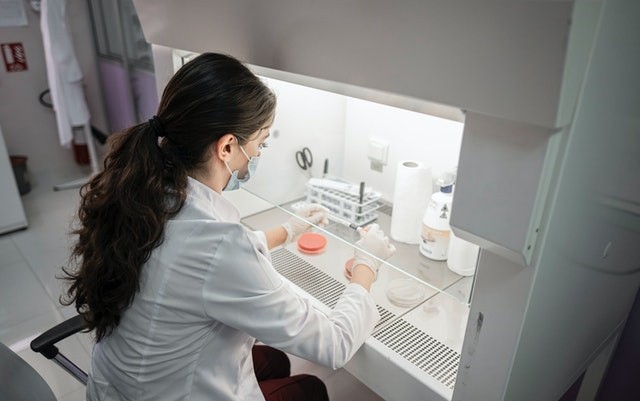Nanotechnology reports recently said that small doses of copper oxide nanoparticles in its composition, function as an immunostimulator of plants.
As a result of this function, a Phys.org report specified, scientists are now planning to obtain a preparation "that will increase the amount of harvested planting material."
Nanoparticles as sterilizing agents to replace antibiotics in phytoproduction https://t.co/iqWywVHONH pic.twitter.com/ubfByeAU2q
— Zyite (@ZyiteGadgets) April 8, 2022
A simple yet effective preparation for the protection of in vitro-derived seedlings from phytopathogens had been developed by a scientific team of NUST MISIS in collaboration with colleagues from Voronezh and Tambov.
ALSO READ : Nanomaterial for Better Insulin Effects; New Approach to Effectively Treat Type 1 & 2 Diabetes

Mass Phytoproduction
Modern approaches to mass phytoproduction comprise obtaining material of woody plants by clonal micropropagation in vitro. This vegetative propagation approach is making it possible to obtain new plants, genetically identical to the origins sample, in a laboratory vessel or other controlled investigational environment rather than within a natural setting or living organism.
There are several challenges with this new technology. One of the issues is that, as nutrient media for "phytoclones" offer ideal conditions for bacterial growth, there's a need for new plants to be created and maintained in total sterility.
Essentially, antibiotics are increasingly being used to lessen the risk of intoxication in plants propagated in vitro. Nevertheless, along with the microbial effect, antibiotics have a toxic effect as well, on plant tissues, and inhibit their growth and development. Additionally, microorganisms can adapt to biological therapeutics by mutations, which results in the resistance of phytopathogens.
Use of Nanoparticles as Sterilizing Agents
According to Russian researchers, using nanoparticles, as detailed in the International Journal of Nanomedicine, as sterilizing agents, could be a safe substitute for antibiotics.
The team of scientists from the NUST MISIS, Voronezh State University of Forestry and Technologies named after GF Morozov, and Tambov State University named after GR Derzhavin aimed to analyze the impacts of copper oxide nanoparticles on the growth of colonies of spore-forming mold fungi, and the production of stress resistance genes in birch clones in vitro when infected with phytopathogens.
Olga Zaharova, an expert from the Department of Functional Nanosystems and High-Temperature Materials at NUST MISIS said as expected, "copper oxide nanoparticles had a pronounced antifungal impact" on phytopathogens in plant culture, which is consistent with the outcomes of a number of past studies.
As probable mechanisms of such a phenomenon added Zakharova, they assume that both the diffusion of copper ions which is an antibacterial agent and the particular nanotoxic effects, like the induction of oxidative stress or impairment to the cell membrane.
Nanoparticles in Low Concentrations
Interestingly, the developers said, the plants' maximum sterility was observed at the lowest concentration of nanoparticles examined. In their study, published in the Nanomaterials journal, the researchers suggested that the effect is achieved not through the phytopathogenic microorganisms' direct destruction by nanoparticles, but directly through the seedlings' stimulation of immunity.
Additionally, the study investigators also reported, that nanoparticles in low concentrations can lead to moderate stress in plants, one of the reactions to which is an alteration in their biochemical status.
Compounds like peroxidases and polyphenols, which belong to the system of non-specific protection of plants against phytopathogenic microorganisms, are starting to be generated.
Related information about nanoparticles and antibiotics is shown on PremC's YouTube video below:
RELATED ARTICLE : Nanocapsules for a More Effective Chemodynamic Therapy Developed for One-Step Cancer-Fighting Approach
Check out more news and information on Nanotechnology and Diabetes in Science Times.












